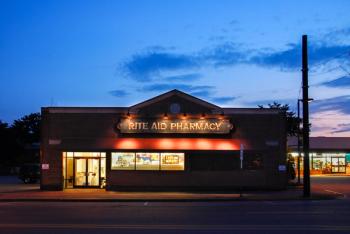
Prostate Cancer Awareness Month Highlights Importance of Regular Screening
Prostate cancers grow slowly and rarely cause any health problems, so without regular screening, it is more difficult to identify any cancer in the prostate.
With September being Prostate Cancer Awareness Month, efforts are ongoing to highlight the importance of regular screening to help diagnose the disease early.
“My Administration continues to push for groundbreaking discoveries and innovative treatments to end cancer as we know it. That is why I am working to create an Advanced Research Projects Agency for Health at the National Institutes of Health — or ARPA-H—which would invest $6.5 billion to develop breakthroughs that prevent, detect, and treat cancer and other deadly diseases,” said President Joe Biden in a White House statement.1 “And we are working on methods to prepare more advanced early detection tests and clinical trials to develop and enhance treatments for all men.”
Surgery, radiation therapy, and active surveillance are the most common treatments for early-stage prostate cancer, the CDC said.2
Nearly half of individuals with low-risk prostate cancer managed by active surveillance later transition to treatment within a few years of diagnosis, according to a
Prostate cancers grow slowly and rarely cause any health problems, so without regular screening, it is more difficult to identify any cancer in the prostate. Screening can include a PSA test, a digital rectal exam, and, if necessary, a biopsy.2
As part of Prostate Cancer Awareness Month, the Prostate Cancer Foundation has put together a 30-day healthy foods challenge, #EatItToBeatIt.
The goal of the challenge is to eat a different healthy food every day for the whole month of September. The Prostate Cancer Foundation lists 30 different foods, including broccoli, sauerkraut, collard greens, apples, popcorn, avocado, and onions to eat throughout the challenge. It also has a weekly schedule of which foods to eat and why each food made the list.3
In the United States, prostate cancer is one of the most common cancers, with nearly 250,000 new diagnoses projected for men in the United States in 2021.4
“We know that 30% of cancer is preventable with lifestyle factors. Eating healthy and exercising can prevent any number of chronic diseases, and in some cases, like diabetes, it can even help reverse some of the most dangerous effects,” the Prostate Cancer Foundation said in a statement.5
New research has found that men over 60 years of age with low-risk prostate cancer could spend 10 years with no active treatment, enabling them to have a better sex life and lower risk of mortality from the disease, according to a press release from a pair of studies presented at the European Association of Urology congress.6
"Obviously, the older you are and the lower risk your cancer, the greater the benefit. But we saw a real divide at age 60. Men diagnosed under 60 on active surveillance have a greater likelihood of dying of prostate cancer with very little added benefit, in terms of extra years with no other treatment,” said urologist Eugenio Ventimiglia in the press release.6 “After 60, if your cancer is low-risk, then active surveillance is really a win-win: the model showed men having ten years or more without other treatment with only a low percentage likely to die from the disease."
References
- A proclamation on national prostate cancer awareness month, 2021. White House. News release. August 31, 2021. Accessed September 8, 2021. https://www.whitehouse.gov/briefing-room/presidential-actions/2021/08/31/a-proclamation-on-national-prostate-cancer-awareness-month-2021/
- Prostate cancer awareness. CDC. Article. August 19, 2021. Accessed September 8, 2021. https://www.cdc.gov/cancer/dcpc/resources/features/prostatecancer/index.htm
- Eat it to beat it challenge: 30 foods. Prostate Cancer Foundation. Article. Accessed September 8, 2021. https://www.pcf.org/30foods/
- Siegel RL, Miller KD, Fuchs HE, Jemal A. Cancer statistics, 2021. CA Cancer J Clin. 2021;71(1):7-33. doi.org/10.3322/caac.21654
- Eat it to beat it prostate cancer awareness month. Prostate Cancer Foundation. Article. Accessed September 8, 2021. https://www.pcf.org/eat/
Newsletter
Stay informed on drug updates, treatment guidelines, and pharmacy practice trends—subscribe to Pharmacy Times for weekly clinical insights.




















































































































































































































